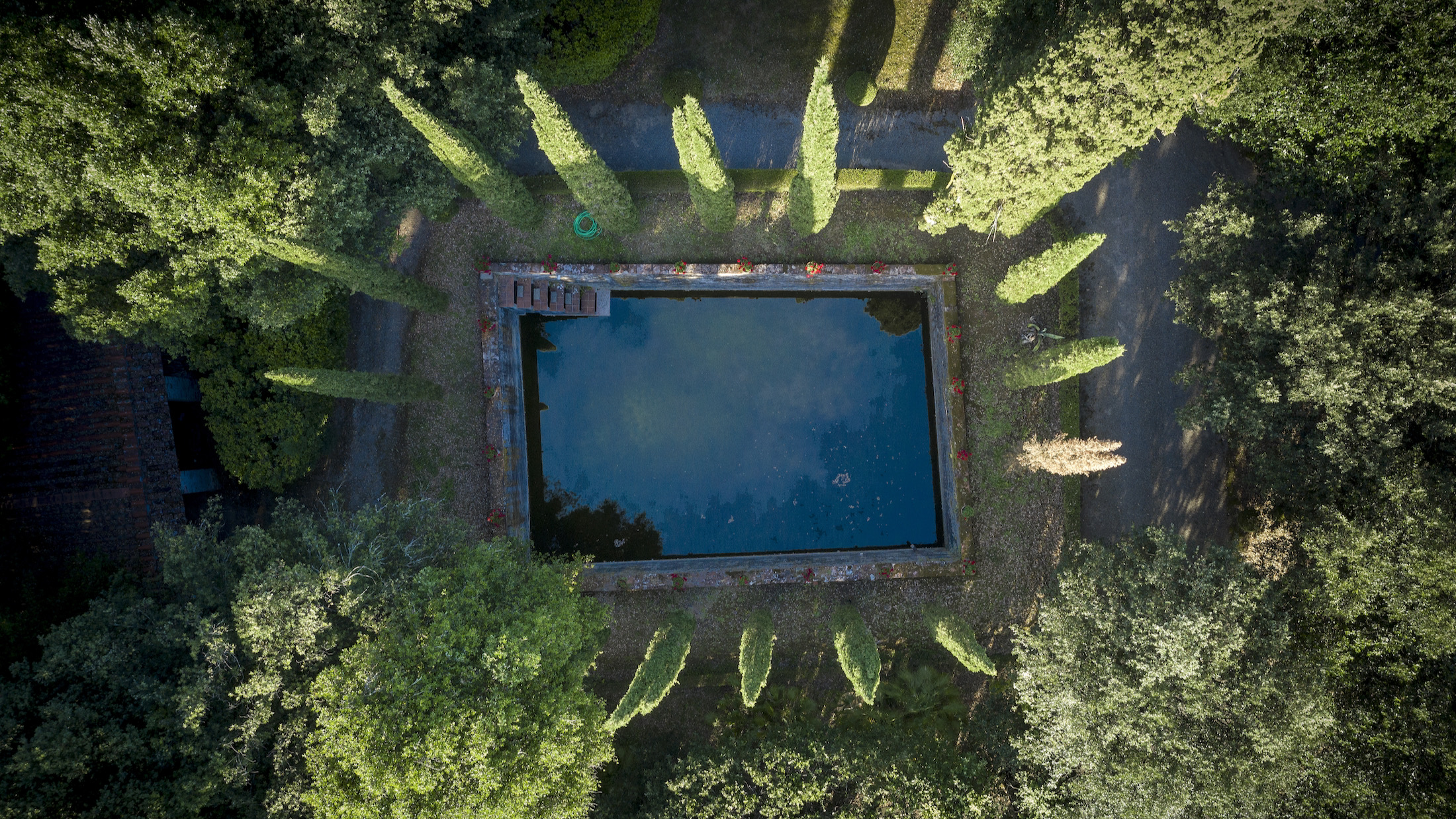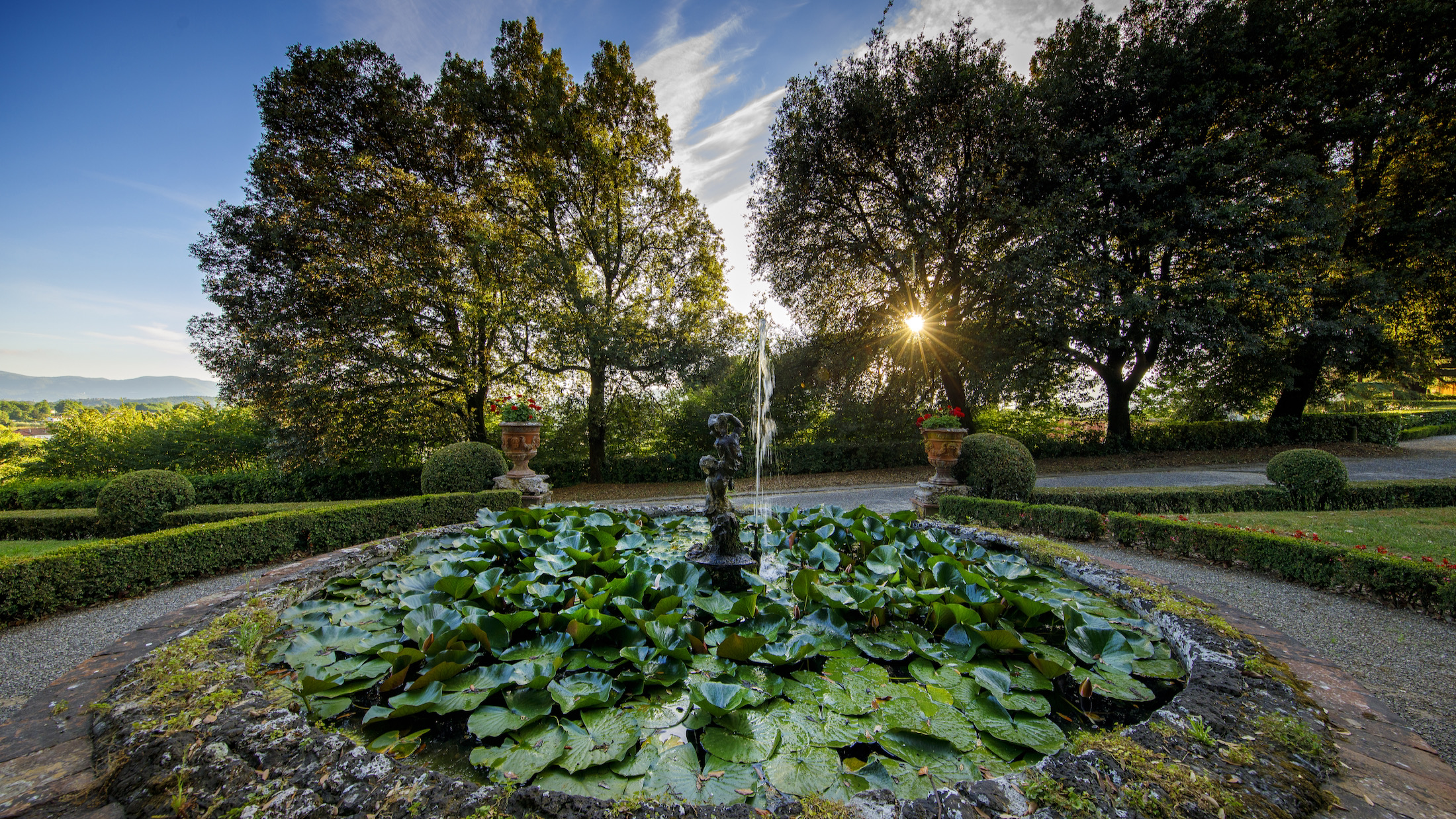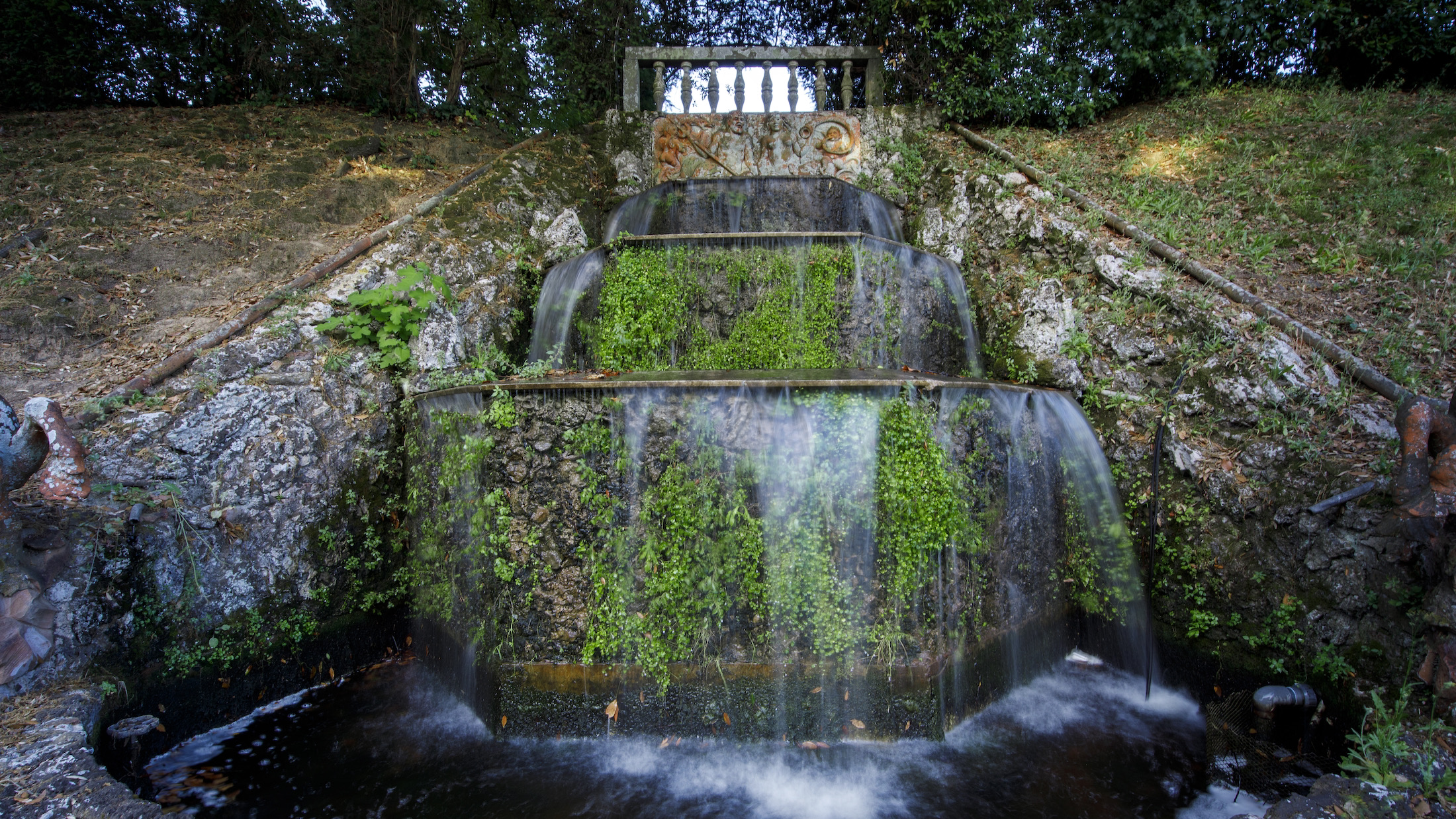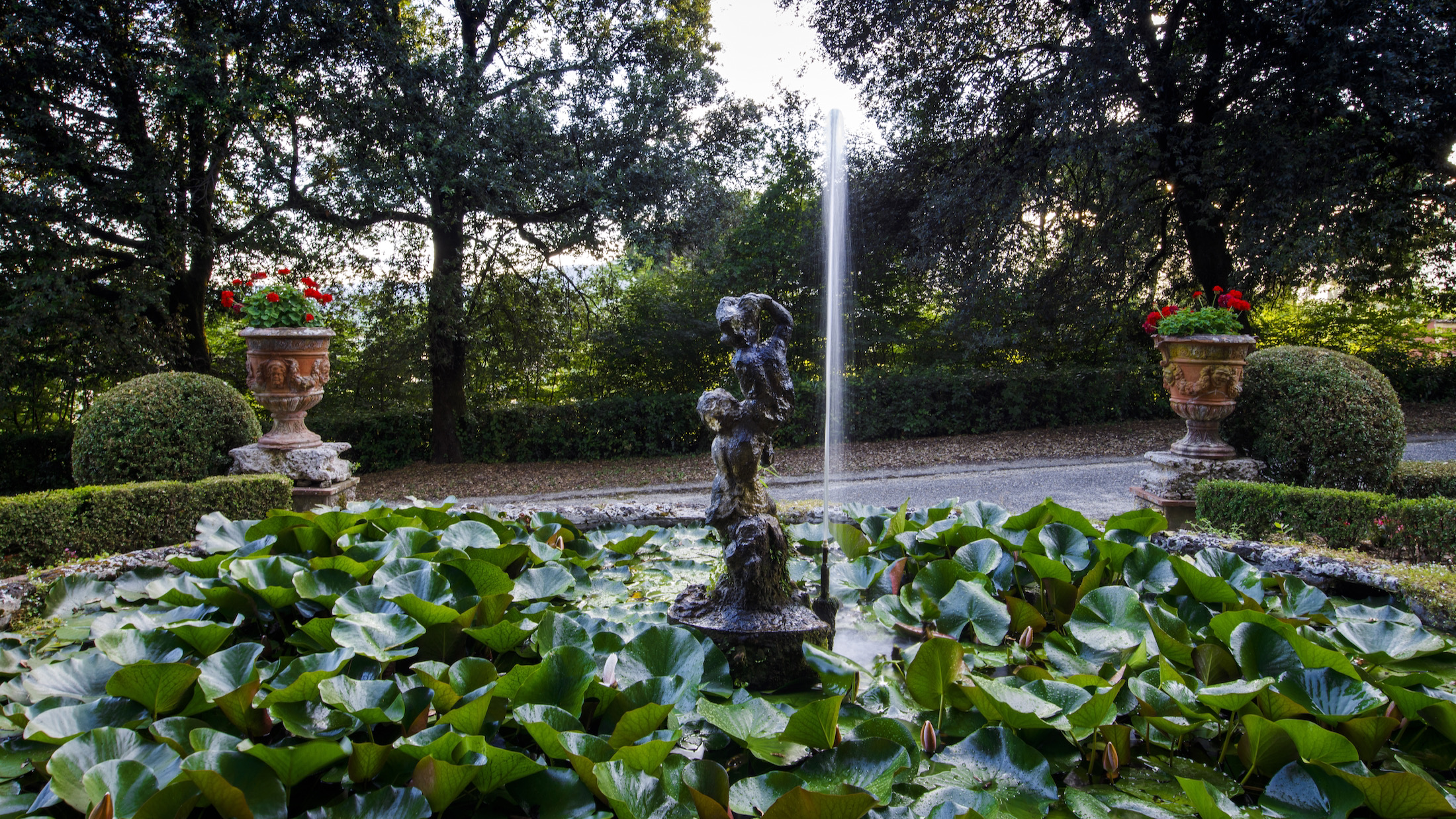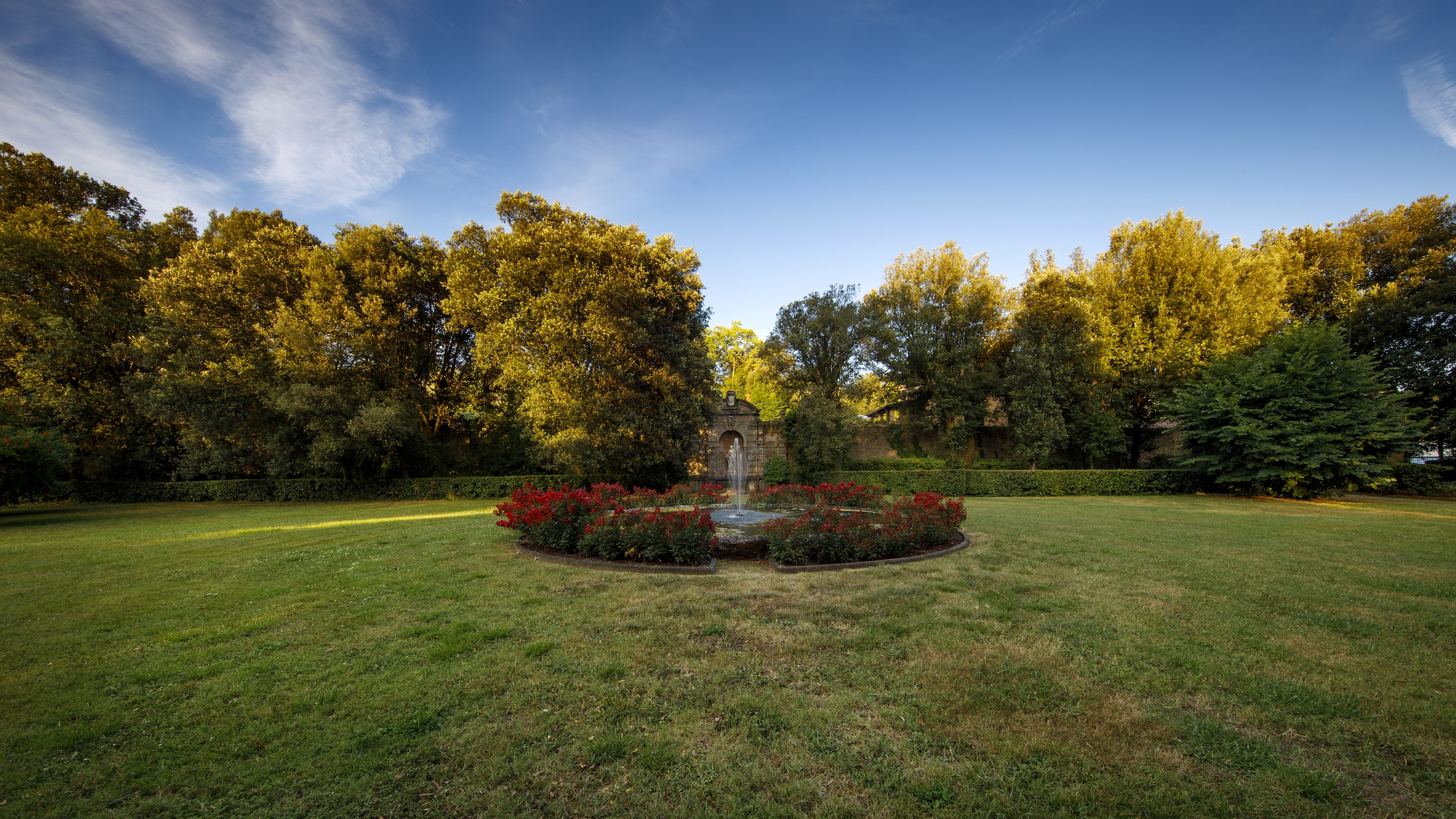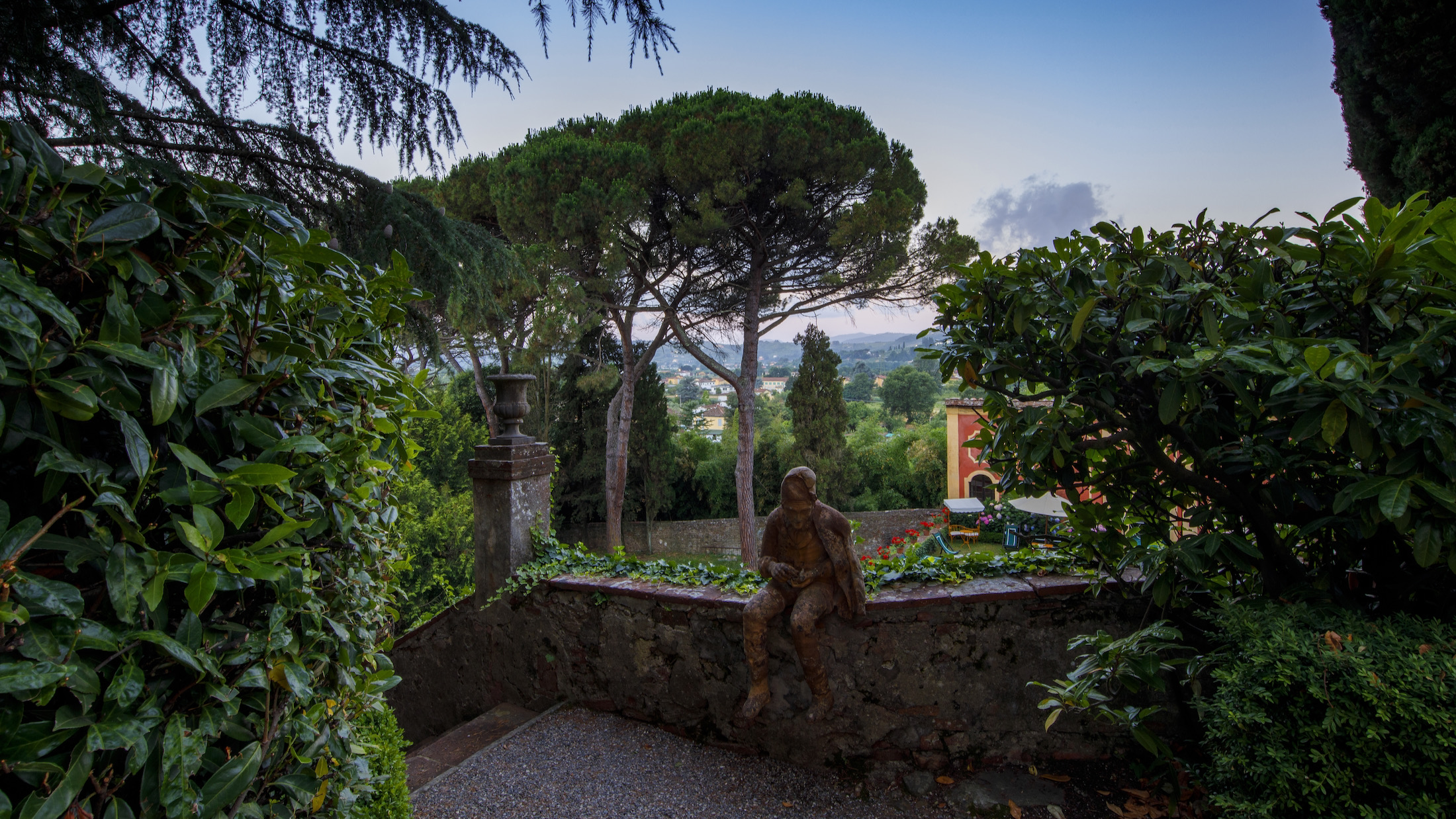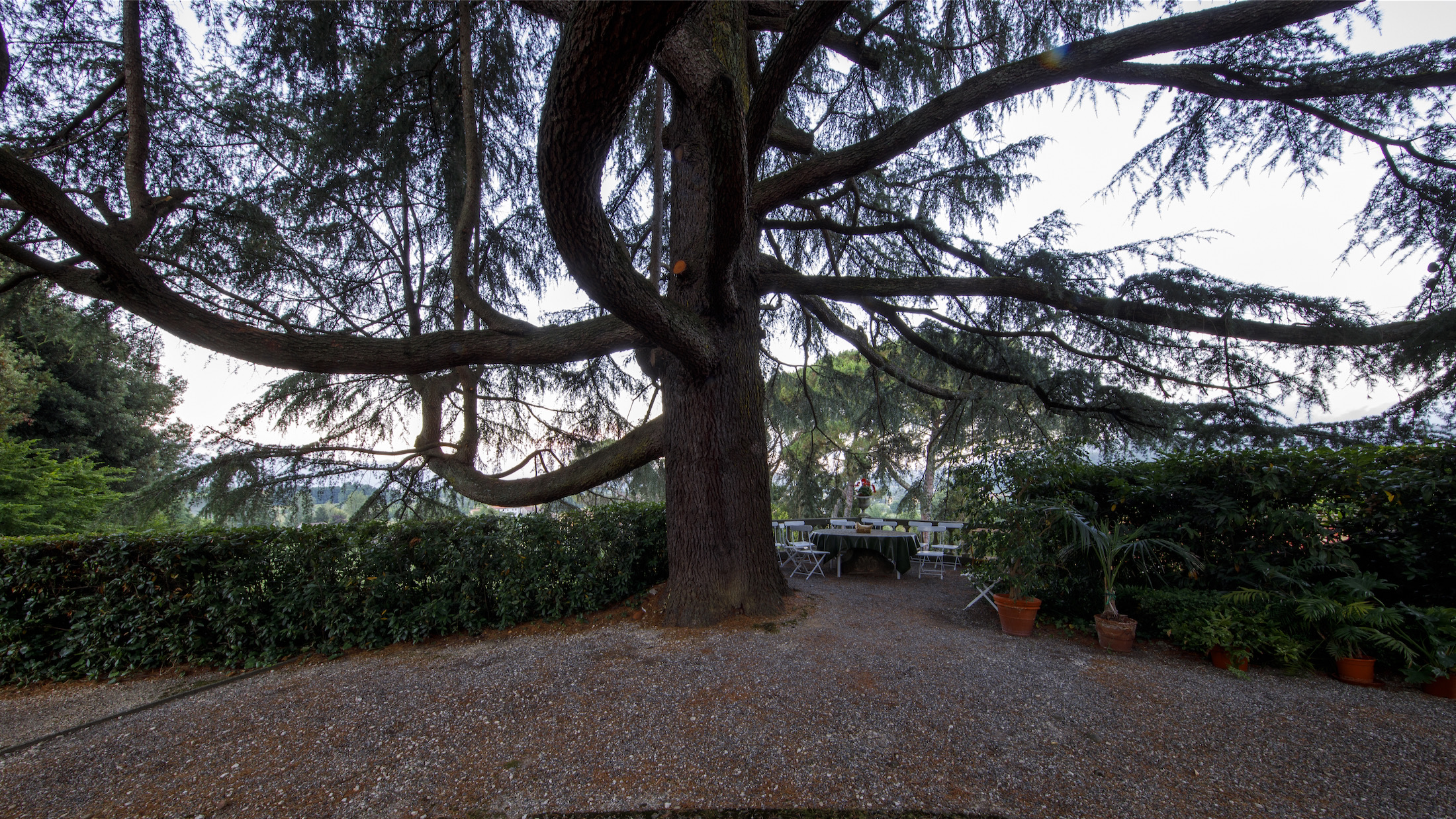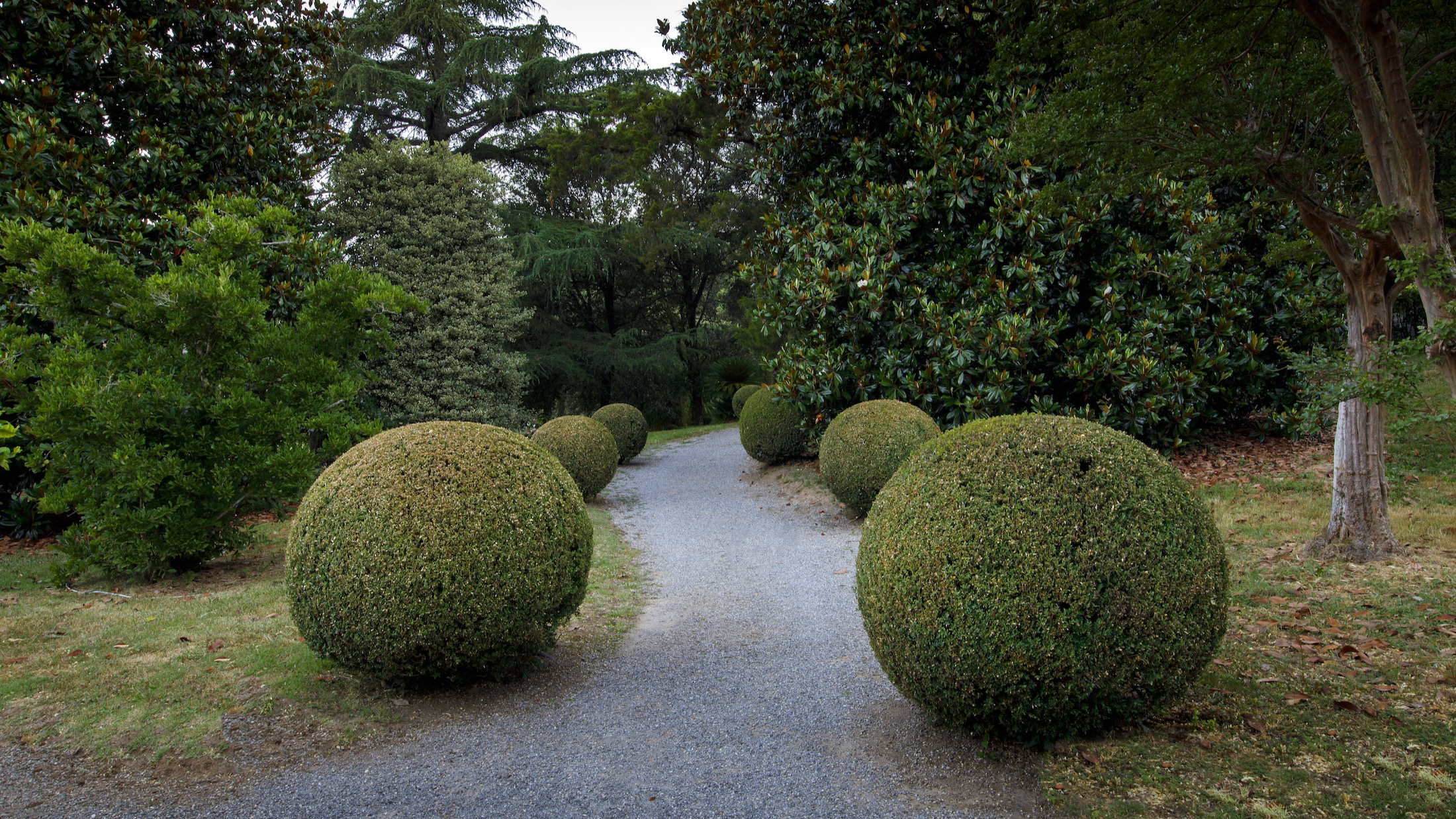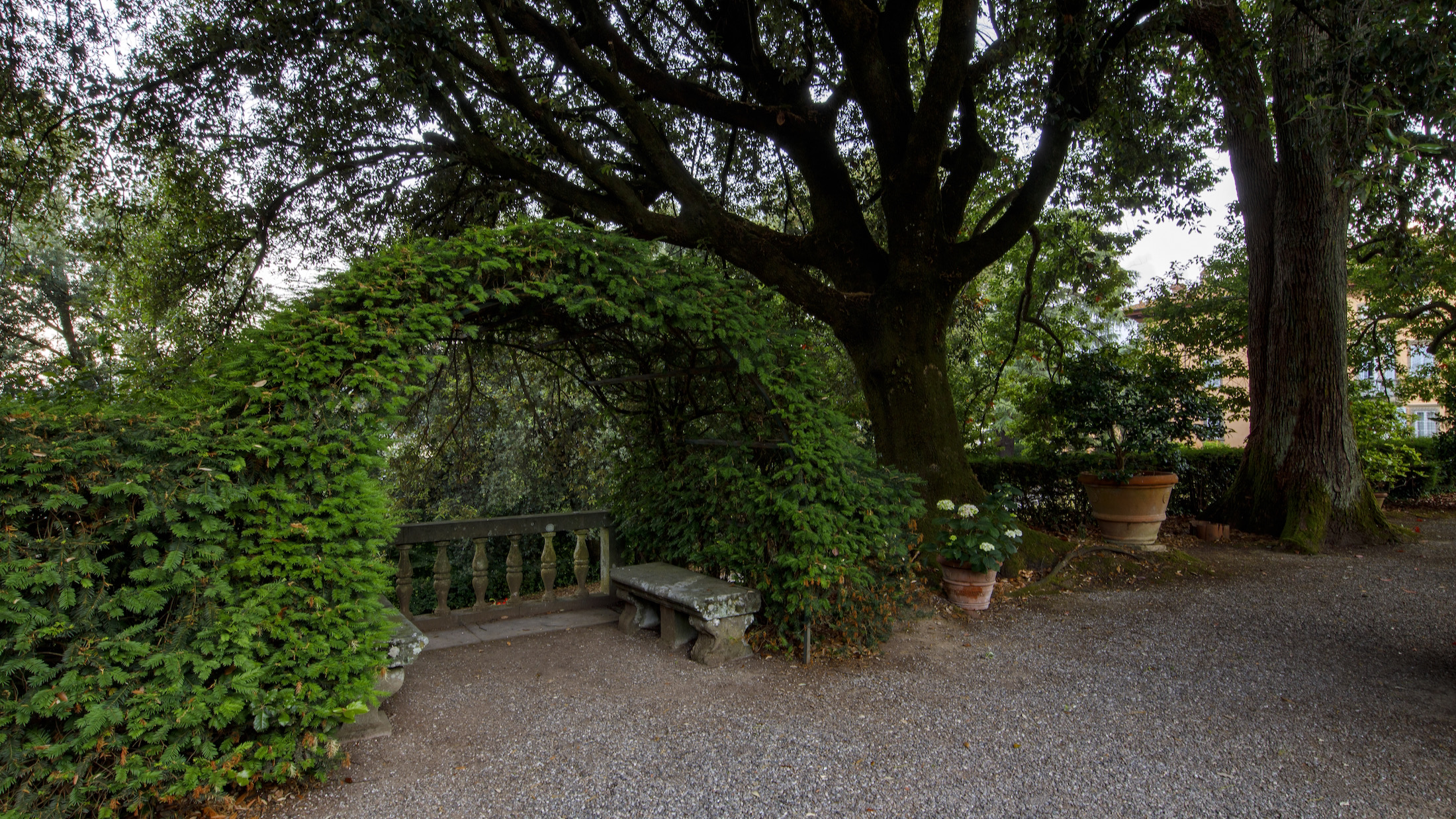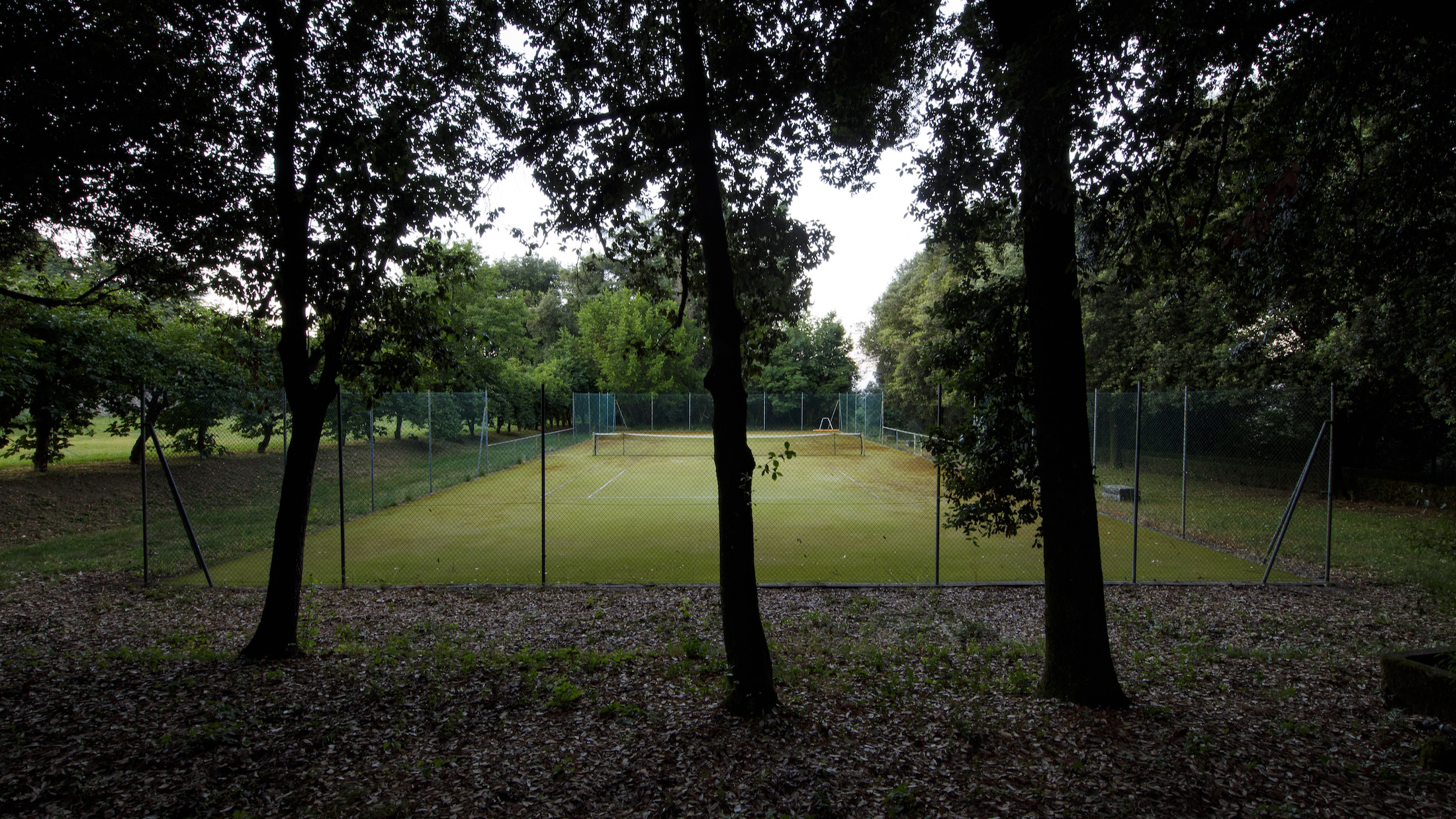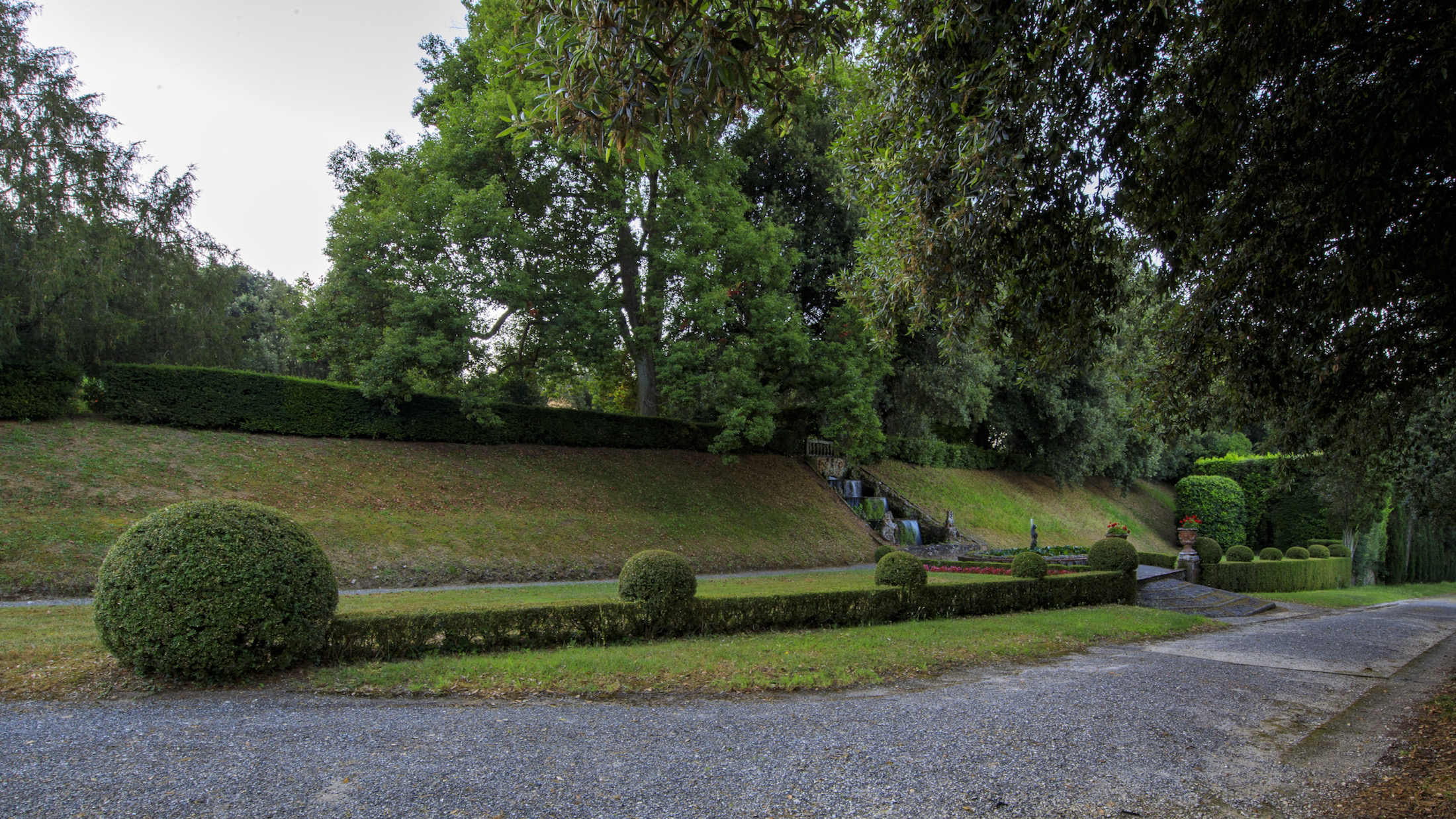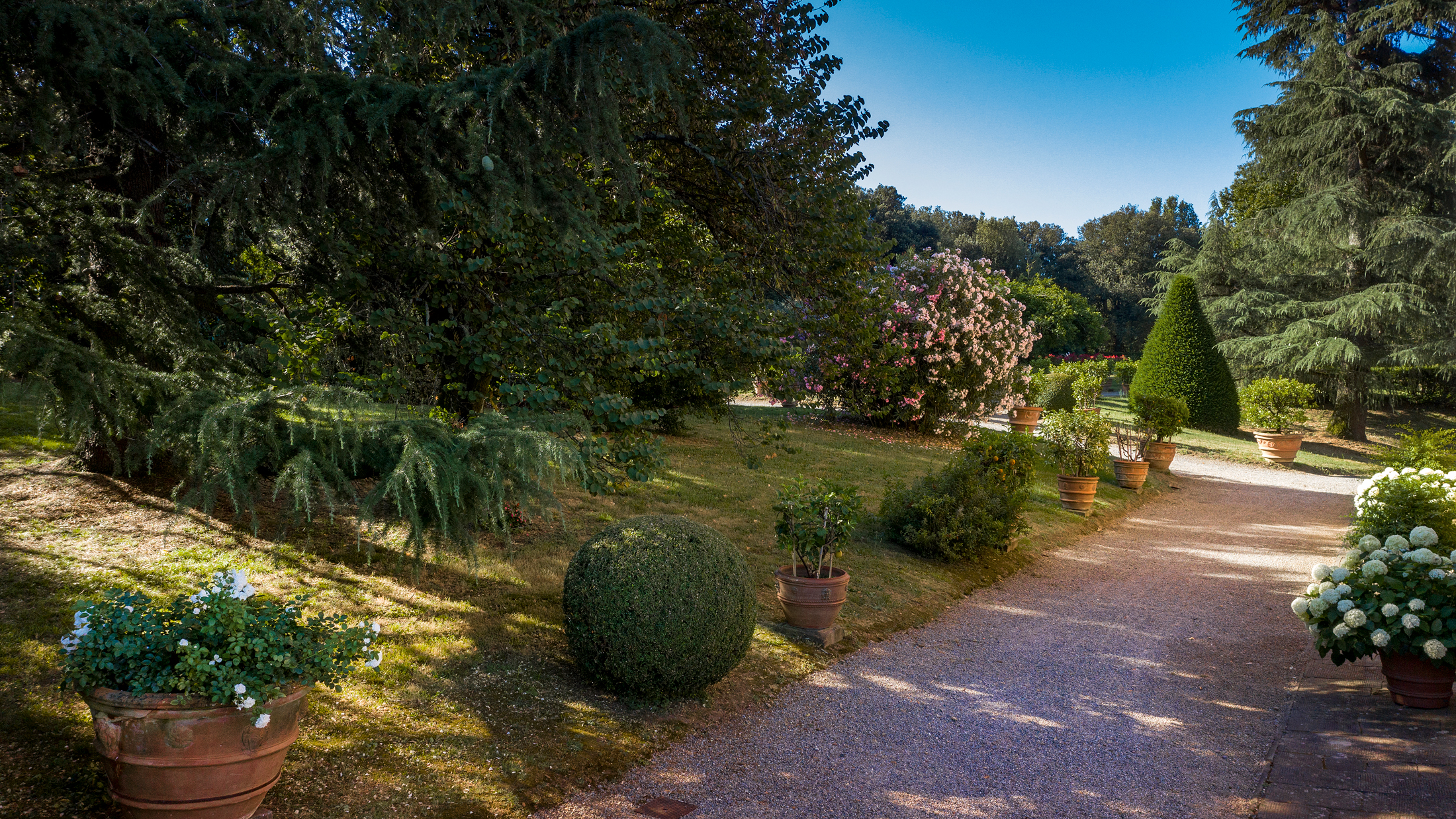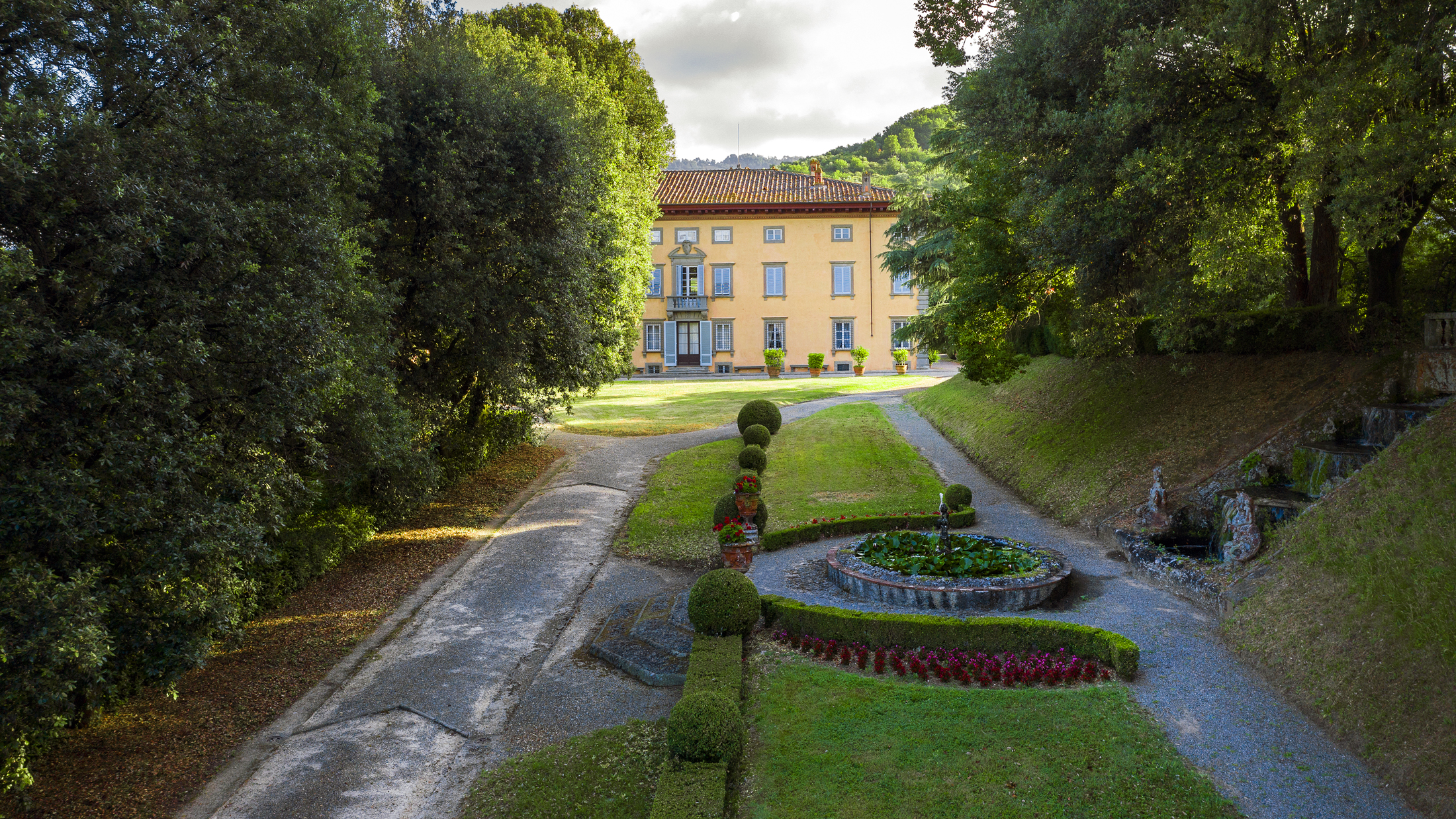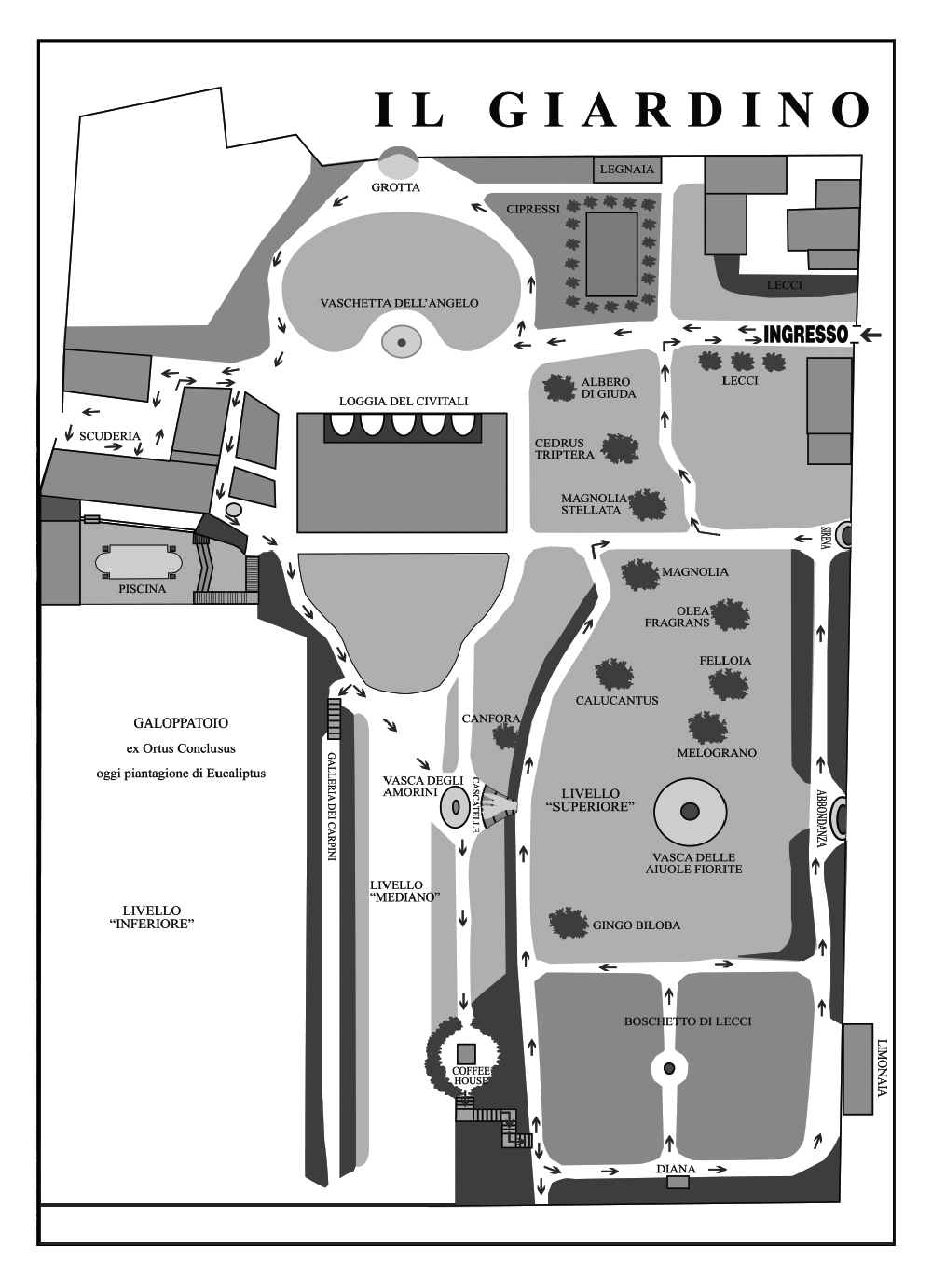The Garden
Villa Oliva is entirely surrounded by an exclusive fenced park of about five hectares made up of numerous tree species.
The park of the Villa, entirely fenced, extends for about five hectares and is made up of various types of gardens. In an interesting 17th century Terrilogio we find the property reproduced and described.
The double façade access to the valley of the Villa consists of four imposing stone pillars that denote the ancient splendor of the Buonvisi family. In fact, they were built in gray stone, embellished and enriched by friezes in white marble, as evidenced by the remaining lateral volutes, the half columns, in which the two materials alternate, the niches, one of which is still surmounted by the coat of arms of Buonvisi. The pillars were also made more animated by stylized stone masks and geometric decorations made with black and white river stones, decorations that will then also recur in other works of the Villa. The entrance gate opens onto a long and scenic avenue of cypresses; at the bottom of it, in all its beauty, the stately home appears.
The peculiar characteristic, however, is not given so much by said row, but by another, parallel to it, consisting of imposing and ancient hornbeams: these, intersecting at their summits, constitute an arboreal vault, which connects to the villa through a series of small scales. This pergola, unique of its kind, replaces the more usual pergola of plants such as vines, wisteria, jasmine, common in other places. The upstream access, consisting of two curved tympanum pillars, with masks and mosaics, also decorated with the Buonvisi comet, is more sober.
The garden in front of the building has a double slope of the land that rises to the north, where the Villa is located, and to the east; to remedy this, terraces were used, which still exist today, intended for different crops: the various areas are separated by low walls, grassy hills, low box hedges. (Buxus sempervirens L.) The overall structure of the garden is still today marked by particular effects of surprise and movement. In fact, going along the cypress-lined avenue (Cupressus sempervirens L.), on the right there is a “green room”, made with yew plants (Taxus baccata L.) and laurel (Laurus nobilis L.); in the middle of it, among the dark green of the trees, stands a light stone table flanked by two benches. Further on we find a round gushing basin, terracotta statues and a stepped waterfall adorned with tuff. To the left of the entrance gate, in addition to the aforementioned row of hornbeams, we find a plantation of eucalyptus trees (Eucalyptus globulus Labill.); this area west of the main entrance in the past was used for the cultivation of vines and fruit trees.
In addition to the aforementioned avenue of hornbeams, scattered throughout the park we find other suggestive arboreal creations such as, for example, a beautiful belvedere covered by arched yews, bordered by a balustrade with columns that opens suggestively on the garden below and on the landscape of the hills. surrounding the city. The beauty of the place is enhanced by the stone and terracotta statues which, with their symbolism, recall us to the destination of the place: a barn owl and a beautiful Diana sitting, with her faithful dog and quiver, are positioned in a plantation of holm oaks (Quercus ilex L.), which constituted the ragnaia, that is the place intended for the placement of nets to hunt birds.
Il giardino a nord si caratterizza per la presenza di una delle statue più originali della Villa, il cosiddetto “Pitocco” che rappresenta un vecchio, immortalato in una posa naturale, seduto su di un muretto, con le gambe abbandonate lungo ad esso, la schiena leggermente curva.
La bellezza del parco è accentuata dalle fontane il cui funzionamento era ed è favorito dalla ricchezza delle acque della zona. Nell’antico impianto, ancora funzionante, l’acqua delle sorgenti veniva convogliata in una grande vasca che, grazie al leggero dislivello del suolo, garantiva un costante funzionamento nell’erogazione, necessaria sia ad alimentare gli zampilli delle fontane, sia nell’irrigazione del giardino e dell’orto. Nel giardino a nord è situata quella che viene considerata come la fontana più bella del parco: quella della “Sirena”, attribuibile, secondo Isa Belli Barsali, al medesimo architetto che ha realizzato l’ingresso ad est. Essa è addossata al muro di cinta e la sua sommità è sormontata da un timpano, che sorregge uno stemma dei Buonvisi.
Al centro, contornata ai lati da due pilastri in pietra, ornati da due cariatidi che spiccano sullo sfondo di una simmetrica decorazione eseguita con sassi di fiume bianchi e neri, e da satiri ghignanti, si trova la figura di una Sirena alata. Se la fontana è bellissima altrettanto interessante è la finta grotta, situata anch’essa nella zona a Nord. Questa costruzione, di gusto prettamente cinquecentesco, si colloca in un anfiteatro di lecci che esalta la finta naturalezza delle pietre di tufo e delle stalattiti. Al centro della grotta, seduto su di un masso, c’è un putto, a cui fanno da corona cavalli fantastici e puttini alati con la coda di pesci.
Oltre a soddisfare il gusto estetico, questa fontana aveva il compito di alimentare con le sue acque i bacini delle terrazze e, in particolar modo, il viale di carpini . La particolarità di quest’opera è costituita da un’apertura nella parte centrale della grotta che permette di vedere le terre antistanti la chiusa.
Un’altra fonte, che ancora oggi è sovrastata dallo stemma dei Buonvisi, è quella dell’Abbondanza. La statua di gusto ottocentesco, emerge da una nicchia, che riprende la decorazione, anche se più lineare, a fasce in pietra grigia e marmo bianco del cancello d’ingresso.
The north garden is characterized by the presence of one of the most original statues of the Villa, the so-called “Pitocco” which represents an old man, immortalized in a natural pose, sitting on a low wall, with his legs abandoned along it, his back slightly curved.
The beauty of the park is accentuated by the fountains whose functioning was and is favored by the richness of the waters of the area. In the ancient plant, still functioning, the water from the springs was conveyed into a large tank which, thanks to the slight difference in level of the ground, guaranteed a constant functioning in the supply, necessary both to feed the jets of the fountains, and to irrigate the garden and vegetable garden. In the north garden is what is considered to be the most beautiful fountain in the park: that of the “Siren”, attributable, according to Isa Belli Barsali, to the same architect who built the entrance to the east. It is leaning against the surrounding wall and its top is surmounted by a tympanum, which supports a coat of arms of the Buonvisi family.
In the center, surrounded on the sides by two stone pillars, adorned by two caryatids that stand out against the background of a symmetrical decoration made with black and white river stones, and by grinning satyrs, is the figure of a winged mermaid. If the fountain is beautiful, the fake cave is equally interesting, also located in the northern area. This building, with a purely sixteenth-century taste, is located in an amphitheater of holm oaks that enhances the fake naturalness of the tuff stones and stalactites. In the center of the cave, seated on a boulder, there is a putto, crowned by fantastic horses and winged cherubs with fish tails.
In addition to satisfying the aesthetic taste, this fountain had the task of feeding the basins of the terraces with its waters and, in particular, the avenue of hornbeams. The peculiarity of this work is constituted by an opening in the central part of the cave that allows you to see the lands in front of the lock.
Another source, which is still dominated today by the Buonvisi coat of arms, is that of Abundance. The nineteenth-century-style statue emerges from a niche, which incorporates the decoration, albeit more linear, with gray stone and white marble bands of the entrance gate.
